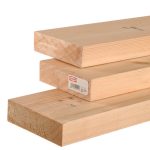For millions of individuals, the arrival of spring could bring additional discomfort. While the blooming trees and vibrant flowers are undeniably beautiful, they may also worsen symptoms for allergy sufferers. It can be even harder on those with allergies and managing chronic pain.
Chronic Pain and Seasonal Allergies
Chronic pain is a persistent condition that lasts for months or even years, affecting various parts of the body. Conditions such as fibromyalgia and arthritis are common examples. Seasonal allergies, on the other hand, are triggered by pollen or other environmental allergens present during specific times of the year. Allergies can intensify the experience of constant and recurring pain due to overlapping symptoms and inflammation.
How Allergies May Worsen Pain
The body’s response to allergens can cause a cascade of reactions, including inflammation and heightened sensitivity. For instance, allergic rhinitis and sinus congestion may lead to headaches or exacerbate existing migraines. Individuals with arthritis may notice increased joint discomfort as inflammatory responses are set into motion. Post-nasal drip from allergies could also disrupt sleep patterns, further contributing to pain and fatigue. Lack of restful sleep can make chronic pain conditions feel more pronounced.
Managing Allergies and Pain
Spring allergies and chronic pain are both challenging conditions. There are a variety of strategies that can help alleviate discomfort. Understanding how to address each aspect of the issue may lead to improved symptom management and a better quality of life.
Addressing Allergies
- Identify Allergens: Allergy testing can help pinpoint specific triggers. Knowing whether pollen or another allergen is causing symptoms could guide effective prevention measures.
- Limit Outdoor Exposure: During high-pollen times of day limiting outdoor activity may be beneficial. For those who need to venture outside, wearing sunglasses and masks may help reduce contact with allergens.
- Maintain a Clean Indoor Environment: Using high-efficiency particulate air (HEPA) filters in your home can remove allergens from the air. Regular surface cleaning and floor-sweeping could also contribute to reduced allergens indoors.
Minimizing Pain During Allergy Season
- Practice Gentle Movement: Stretching or low-intensity exercises can improve circulation and reduce stiffness caused by both allergies and chronic pain.
- Apply Heat or Cold Therapy: If localized pain worsens, you could use a warm compress for muscle relaxation. A cold pack could work to reduce swelling and inflammation.
- Focus on Restful Sleep: Since allergies might disrupt sleep, creating a sleep-conducive environment is beneficial.
- Engage in Relaxation Techniques: Pain and allergies can both lead to stress, which may exacerbate symptoms. Activities such as meditation, deep breathing, or mindfulness practices might assist in maintaining emotional and physical balance.
When to Seek Medical Assistance
While self-care strategies are often effective in mitigating the symptoms of chronic pain and allergies, there are times when professional evaluation is warranted. If symptoms such as intense migraines or difficulty breathing occur, it may indicate the need for further medical insight. Living with consistent pain during allergy season is undoubtedly daunting, but with the right strategies and careful planning, it is possible to find relief and maintain a sense of normalcy.







